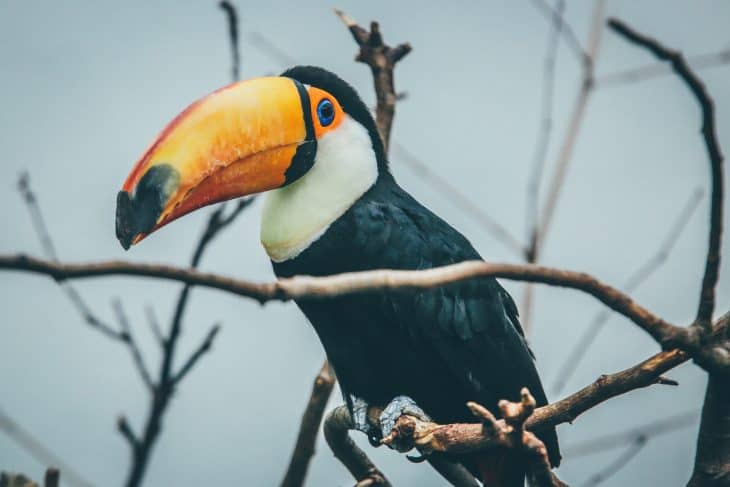
- Although the legs of toucans are short, it is strong.
- Toucan’s average life span is 20 years.
- Male and female toucans have the same colors. In other words, toucans are monomorphic.
- Toucans are friendly. Thus, it is an excellent pet as well.
- Toucans are playful. Likewise, toucans love to play with toys along with their owners.
- Toucans live in Northern parts of the Caribbean, Southern Mexico, and South America.
- The composition of toucan’s beak is from keratin. In like fashion, the human hair and nails are from keratin.
- Although most of the toucan’s beak is color orange, it is possible for them to have a combination of colors such as red, brown, yellow, and green.
- In contrast to other birds, toucan’s beaks are softer.
- Toucans use the serrated edge of their beak to tear apart their food.
- Toucans are omnivorous birds. They eat fruits, as well as other reptiles, bird eggs and insects.
- The scientific name of the toucan is ‘Ramphastidae’.
- The majority of the feathers of the toucan is black. Furthermore, its throat and upper breast are white while its beak is orange in color.
- Toucans use their different colors to blend and camouflage in the rainforest for its safety against predators.
- Deforestation of South American rainforests has destroyed toucans habitats. Fortunately, toucans are not considered endangered thus far.
- South America is the home of the 40 toucan spices.
- Toucans seek shelter from hollowed-out trees created by a woodpecker bird.
- The tongue of a toucan is long, narrow, and singularly frayed on each side.
- Toucans are known to have long beaks.
- A baby toucan is incubated for around 20 days.
Toucans are weather resistant.
Toucans can stand the hot weather during day time. Surprisingly, it can tolerate cold temperatures during night time.
Keel-billed toucan is the national bird of Belize.
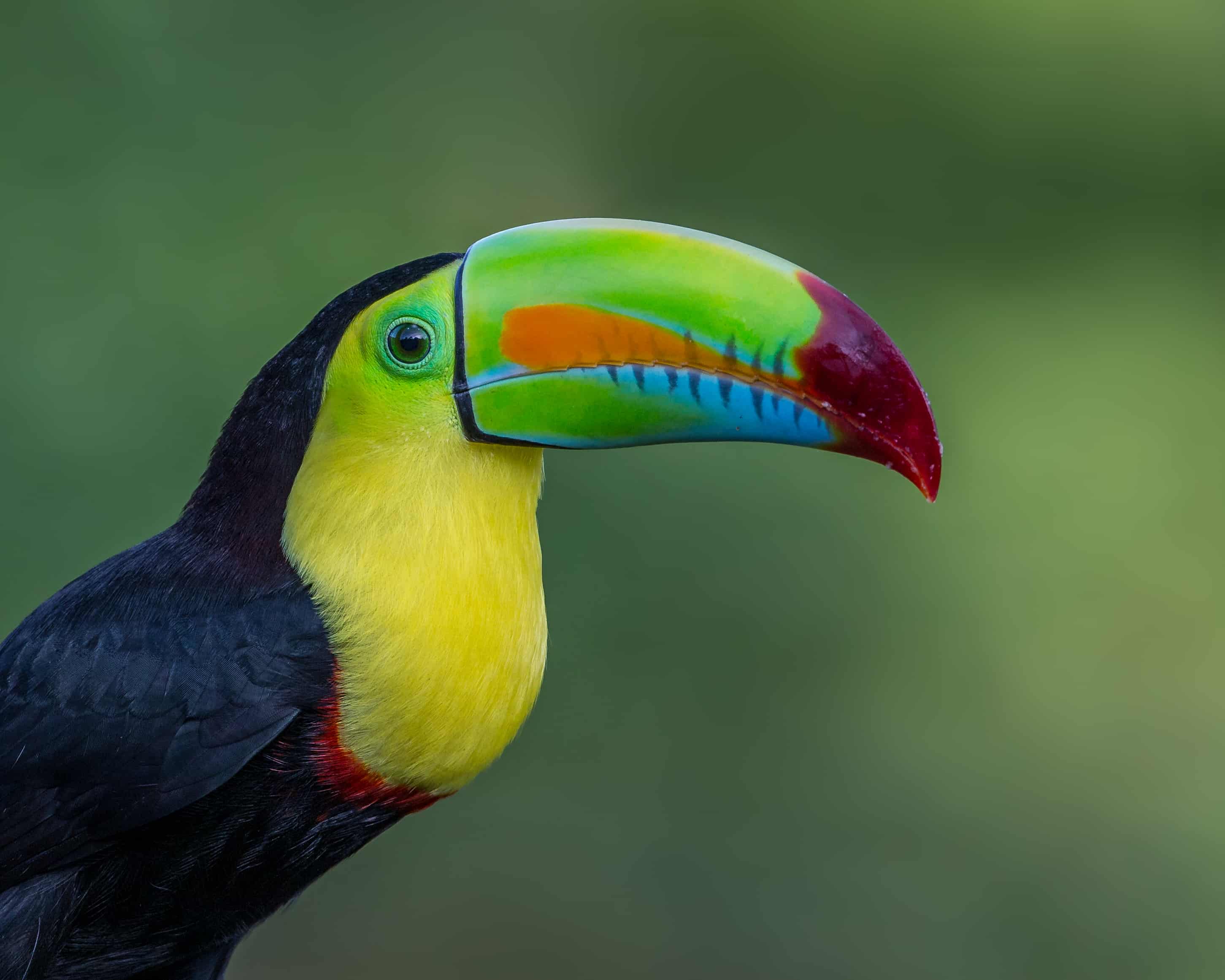
The national bird of Belize, a country in Central America, is the Keel-billed toucan. Keel-billed toucans are found throughout Belize’s forests and nest in holes in tree trunks.
Keel-billed toucans are playful and social.
The keel-billed toucans range in length from around 17 to 22 inches. Furthermore, its long and colorful beaks average around 5-6 inches. Generally, Keel-billed toucan is a playful and social bird that loves to travel in groups.
The Toco toucan is the most famous species in the toucan family.

The Toco toucan is the largest of all toucans. For this reason, the Toco toucan is the most famous species in the toucan family. Moreover, the Toco toucan is found in semi-open habitats throughout a large part of central and eastern South America.
The emerald toucanet is a popular toucan pet.
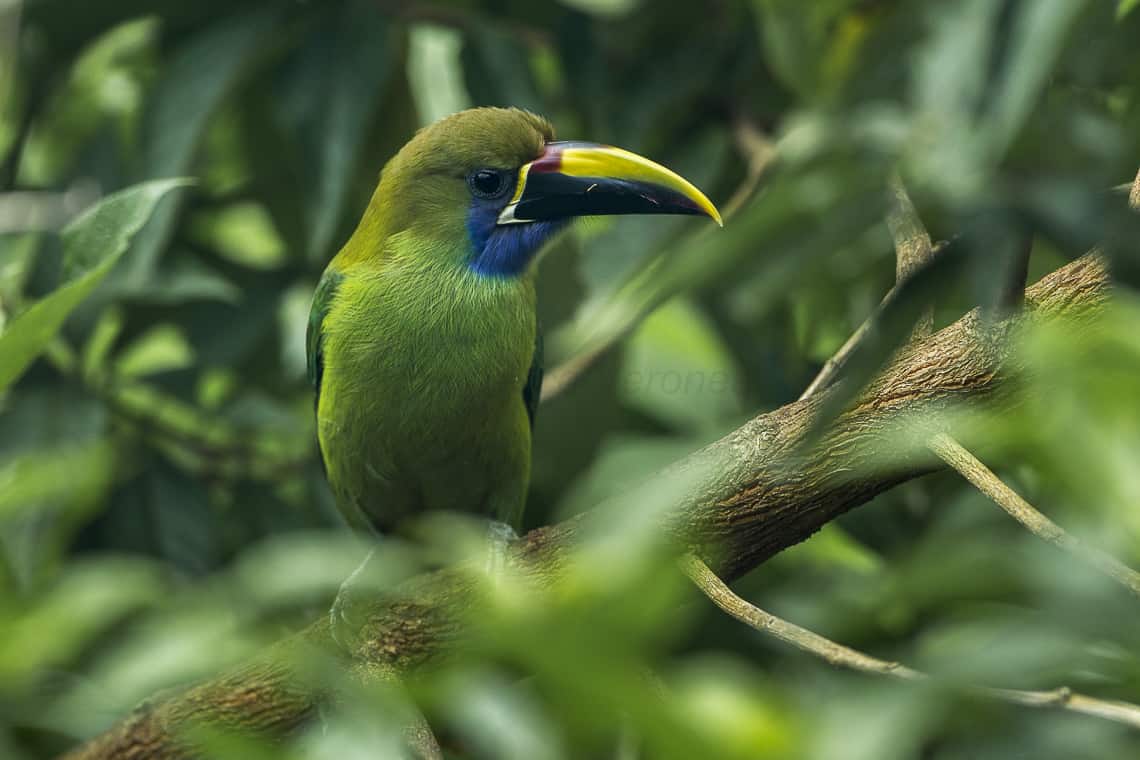
The emerald toucanet is a small toucan from Central America. In contrast, the emerald toucanet is relatively shy as compared to the traditional toucans. However, the emerald toucanet is a popular toucan pet due to its quiet nature, size, and adorable looks.
Swainson's toucan is a subspecies of the yellow-throated toucan.
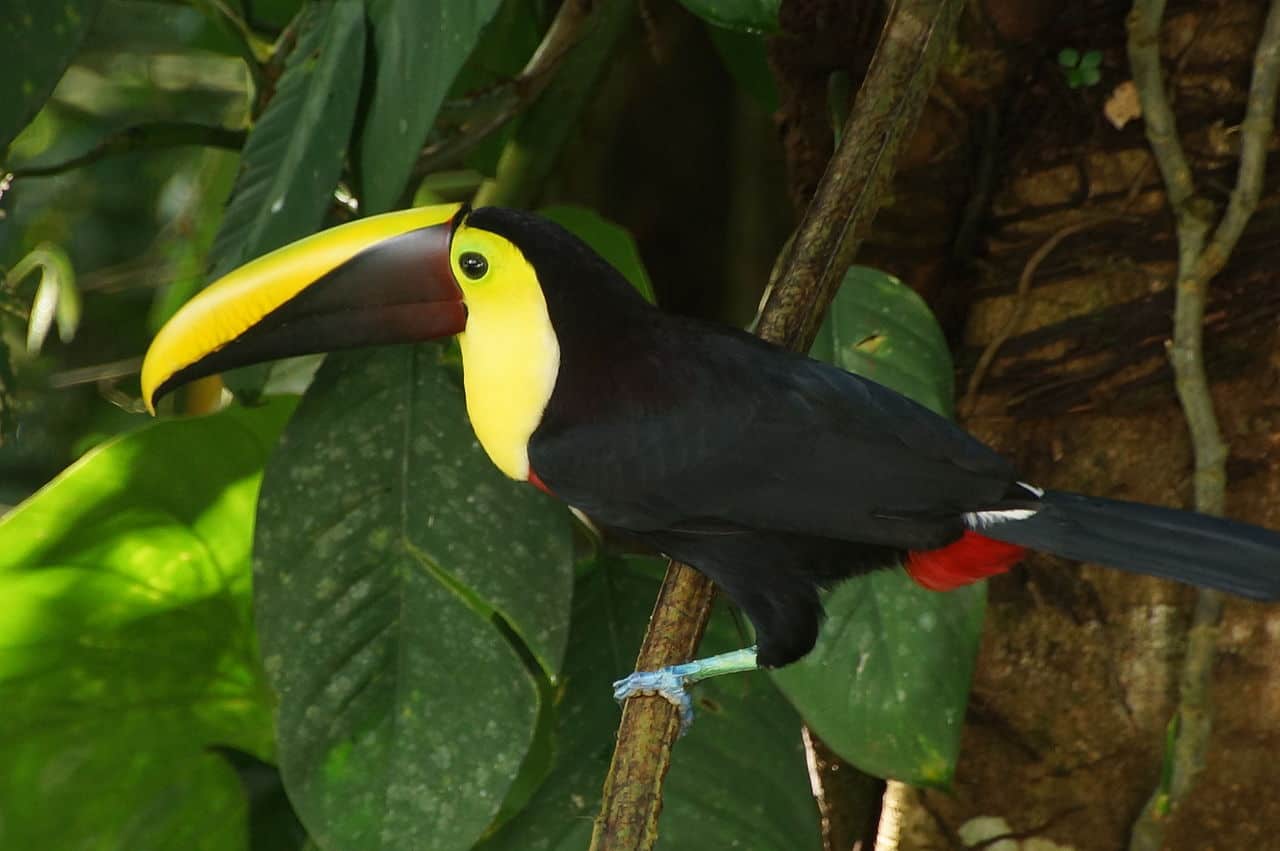
Swainson’s toucan, also known as chestnut-mandible toucan is a subspecies of the yellow-throated toucan from eastern Honduras. Compared to Keel-billed toucan, they have similarity in terms of body plumage, however, the bill is quite different as it was divided diagonally in bright yellow and maroon.
Toucans are not good flyers.
Although toucan birds stay mostly in trees, they are not good flyers. Simultaneously, they use their wings as a glider to take them short distances, preferring to hop from tree to tree rather than flying.
Toucans use their sharp and strong claws to hold tightly onto branches.
Since toucans are not good at flying, it uses its sharp and strong claws which allows them to hold tightly onto branches instead.
The oldest toucan lived for 26 years.
While on the average, the toucan’s life span is around twenty years, the oldest toucan ever recorded lived for 26 years. Moreover, toucan can live for around 18 years as a pet or in captivity.
The beaks of the toucan can change its temperature by up to 10°C.
The big beaks of the toucan help them to keep cool during hot weathers or stay warm during cold weathers. Thus, researchers determined that the toucan has the ability to heat and cool its beak. Moreover, it can change its temperature by up to 10°C in just a few minutes.
The beak of toucans may look heavy but in reality, it is light.
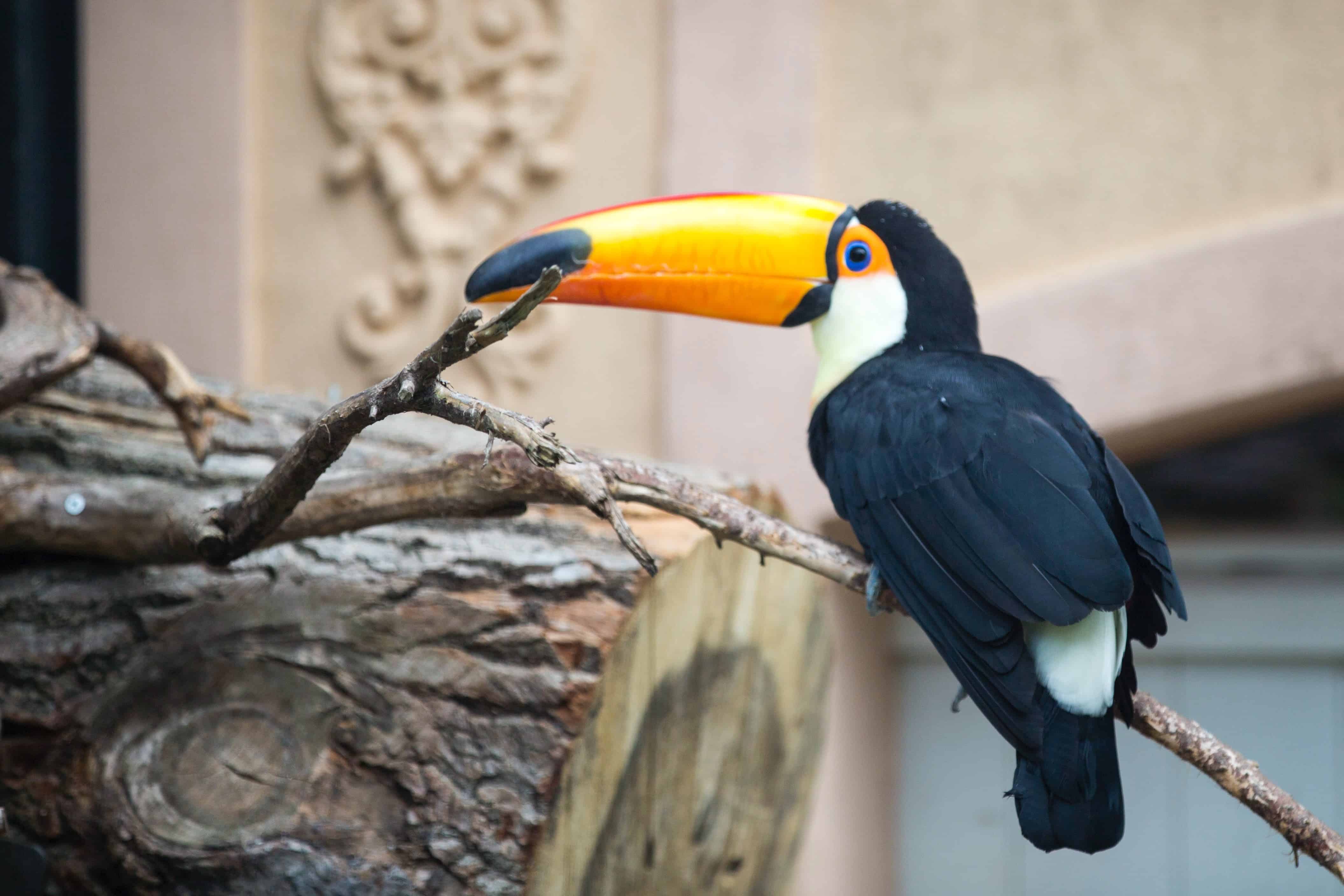
The beak of the toucans may look big and heavy for their size. However, since the beak is made from keratin, a family of fibrous structural proteins, it’s actually very light.
Toucans are much noisier during the late afternoon.
Toucans are active during the day and they produce many different calls. Furthermore, toucans are much noisier during the late afternoon when other birds become inactive.
Toucans are one of the noisiest birds in the world.
Toucans make noise by combining their vocal calls with tapping and clattering sounds from their beaks.
Male toucans have a much lower voice than female toucans.
Toucans make a croaking, growling, and barking sounds, while mountain toucans, a genus of birds in the family Ramphastidae, make braying sounds like a donkey.
The beak of the toucan is 19 centimeters long.
When toucans sleep, they place their beak under their feathers to keep them warm.
The tongue of the toucan is 15 centimeters long.
The tongue of the toucan is almost as long as its beak. On average, the toucan’s tongue is 15 centimeters long. Hence, toucans use their long tongue to catch insects for their meal efficiently.
Toucans can lay up to 5 eggs in their nests.
Toucans can lay 2 to 5 eggs in their nests. Furthermore, when the eggs finally hatch, the young come out naked without down feathers. The down of birds is a layer of fine feathers found under the tougher exterior feathers. Most noteworthy, toucans only mate once a year.
Toucans love to stay in high places like treetops.
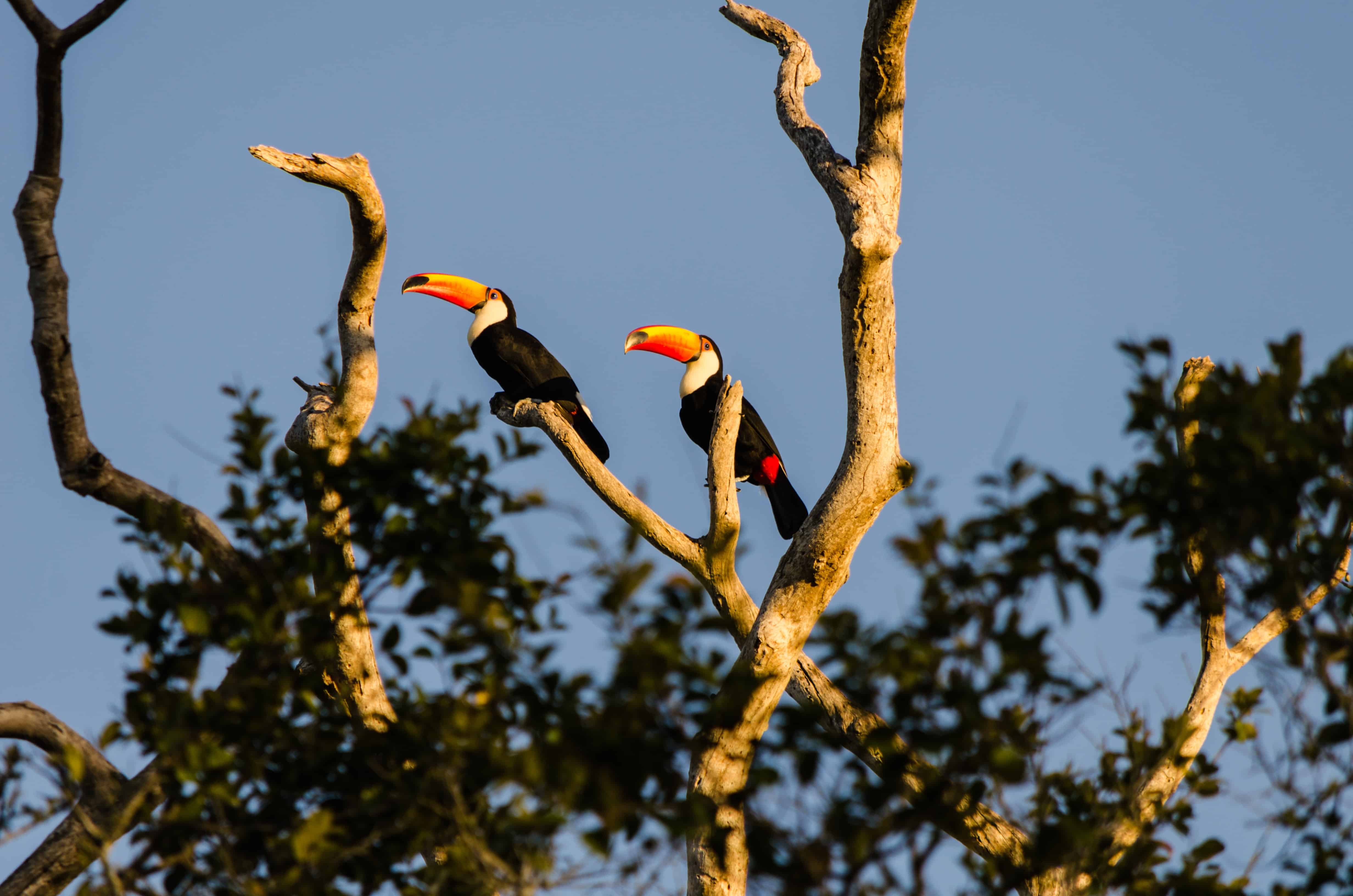
Toucans love to stay in high places like treetops to stay away from predators. Thus, they spend most of their life high on the treetops and drink rainwater from treetop plants called bromeliads and bathe by shaking the wet leaves.
Toucans are born blind.
Aside from the fact that toucans don’t have feathers when they are born, they are also born blind. The young stay in their nest for a few weeks until their body develop. Furthermore, their parents protect and feed them until they are ready to hunt on their own.
The breeding season of toucans occurs during spring.
The breeding season of toucans occurs during spring. Moreover, toucan eggs hatch between sixteen to twenty days.
Toucans are not born with a long beak.
Baby toucans are very cute and adorable, and they are not born with a long beak. The beak of the baby toucan is proportional to its body size and its beak only grows as it matures.
Occasionally, toucans fight to assert dominance in their group.
Toucans occasionally fight using their beaks. In particular, toucans do it to assert dominance or hierarchies to have a superior position in their group.
Toucans are resident breeders and do not migrate.
In contrast to most birds, toucans do not migrate. In fact, toucans love to stay mostly in the area where they are used to. Toucans only move if there is a scarcity of food and resources. However, even if they plan to migrate, it will be hard because toucans are not good at flying.
Toucans like to eat fruits.
The favorite fruits of toucans are mango, banana, apple, melon, orange, guava, grapes, and berries. In addition, they like to eat termites, caterpillars, and spiders as their “insect-meal”.
Toucans also eat bird eggs from other species.
Toucans in the wild are also constantly looking for the nest of other bird species. For this purpose, they will try to sneak in and eat the eggs in the nest, and even small birds if there are any.
The smallest toucan is called Lettered Aracari.
The smallest toucan is called Lettered Aracari. It is only 11 inches tall and weighs under 5 ounces. Lettered Aracari can be seen in Brazil and Bolivia. Mostly, they are found in lowland forests, swamps, and degraded former forests.
Toucans have land and air predators.
The land predators of toucans are the big cats such as tiger and jaguars. Simultaneously, they are also hunted by other flying animals like hawks and eagles. Toucans actually communicate to help and warn each other to escape. On the other hand, they also use their loud voices to scare away predators.
The yellow-browed toucanet is classified as an endangered species.
In general, toucans are not considered an endangered animal. However, the yellow-browed toucanet is a species of toucan that is classified as endangered. The yellow-browed toucanet is a rare species of toucans from Northen Peru.
Dora the Explorer has a "toucan friend" which teaches the viewers how to speak in Spanish.
The famous cartoon Dora the Explorer has a toucan bird in its story and it’s named Señor Tucán. Señor Tucán is a helpful bird that guides Dora as well as assisting her during explorations. Above all, Señor Tucán only speaks Spanish, thus Dora the Explorer translates it for the viewers to learn the Spanish language.
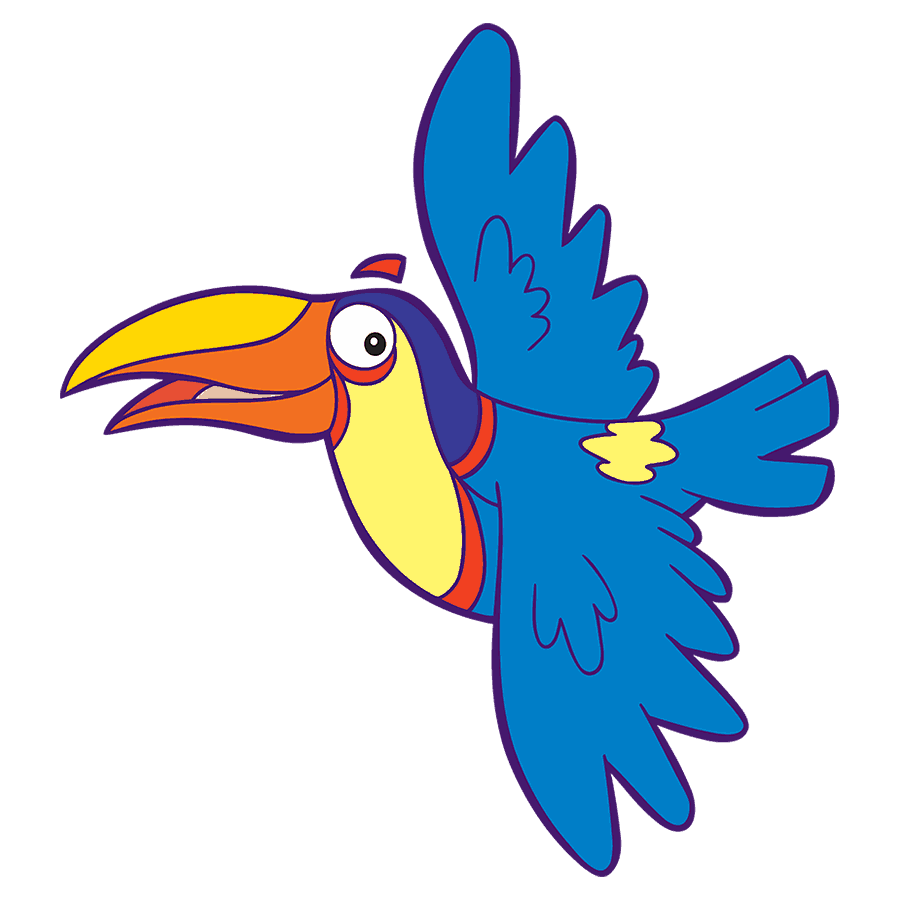
Kellogs uses a toucan mascot in its Froot Loop Cereal since 1963.
The Kellogs breakfast cereal, Froot Loops, has been using the cute toucan mascot since 1963. Manuel R. Vega created the Kellog’s mascot and the company named it Toucan Sam. To illustrate, Toucan Sam has the ability to smell the Froot Loops from anywhere, and it’s also known the funny punch-line, “Follow your nose!”.
Was this page helpful?
Our commitment to delivering trustworthy and engaging content is at the heart of what we do. Each fact on our site is contributed by real users like you, bringing a wealth of diverse insights and information. To ensure the highest standards of accuracy and reliability, our dedicated editors meticulously review each submission. This process guarantees that the facts we share are not only fascinating but also credible. Trust in our commitment to quality and authenticity as you explore and learn with us.



